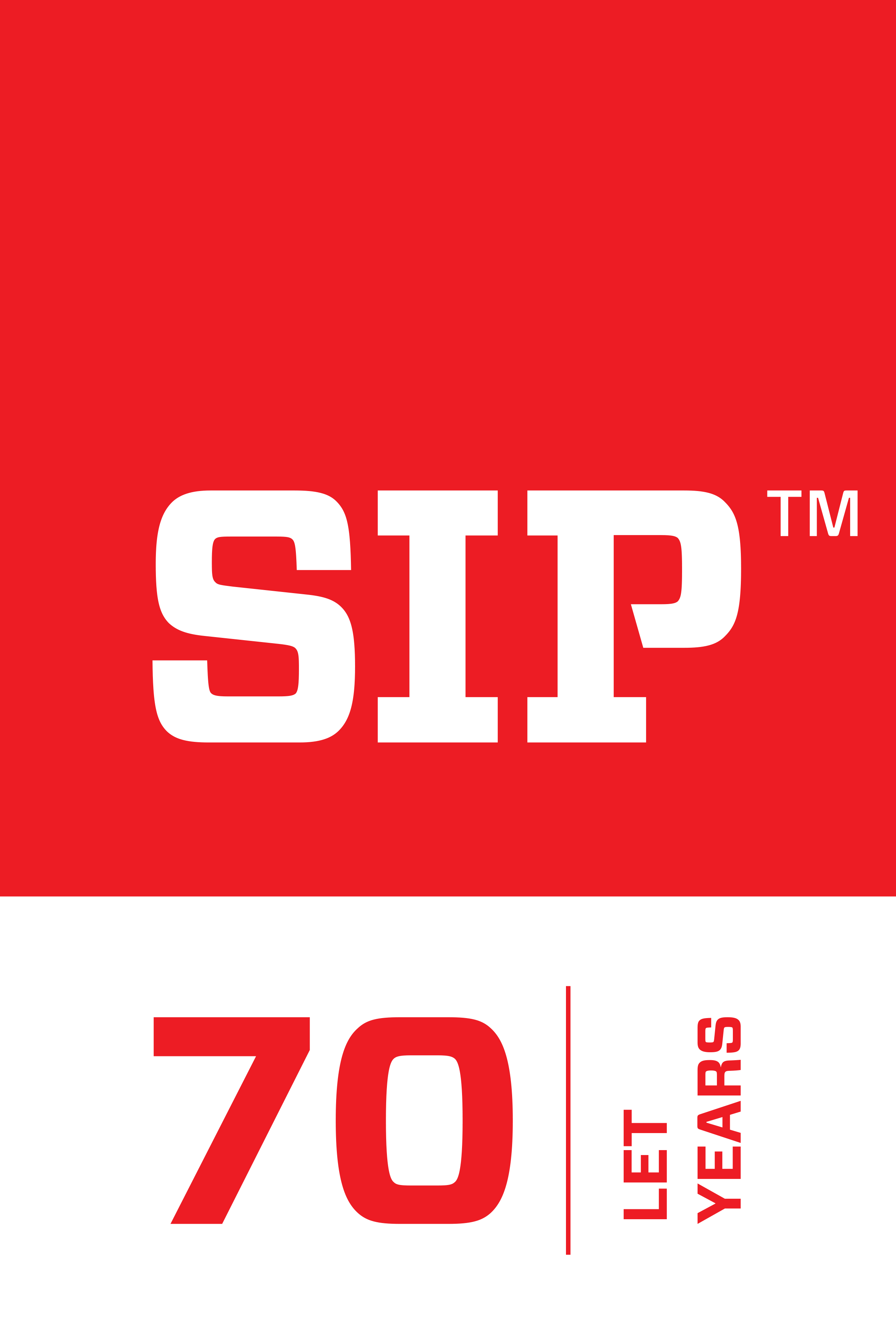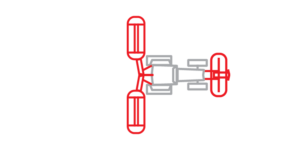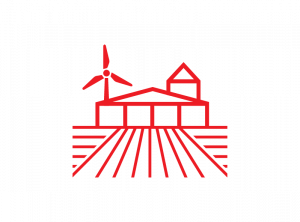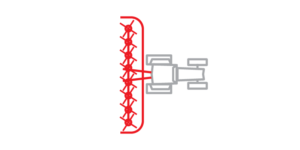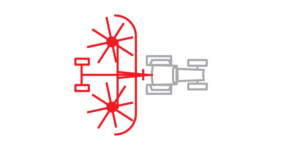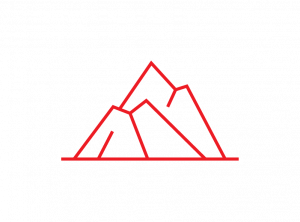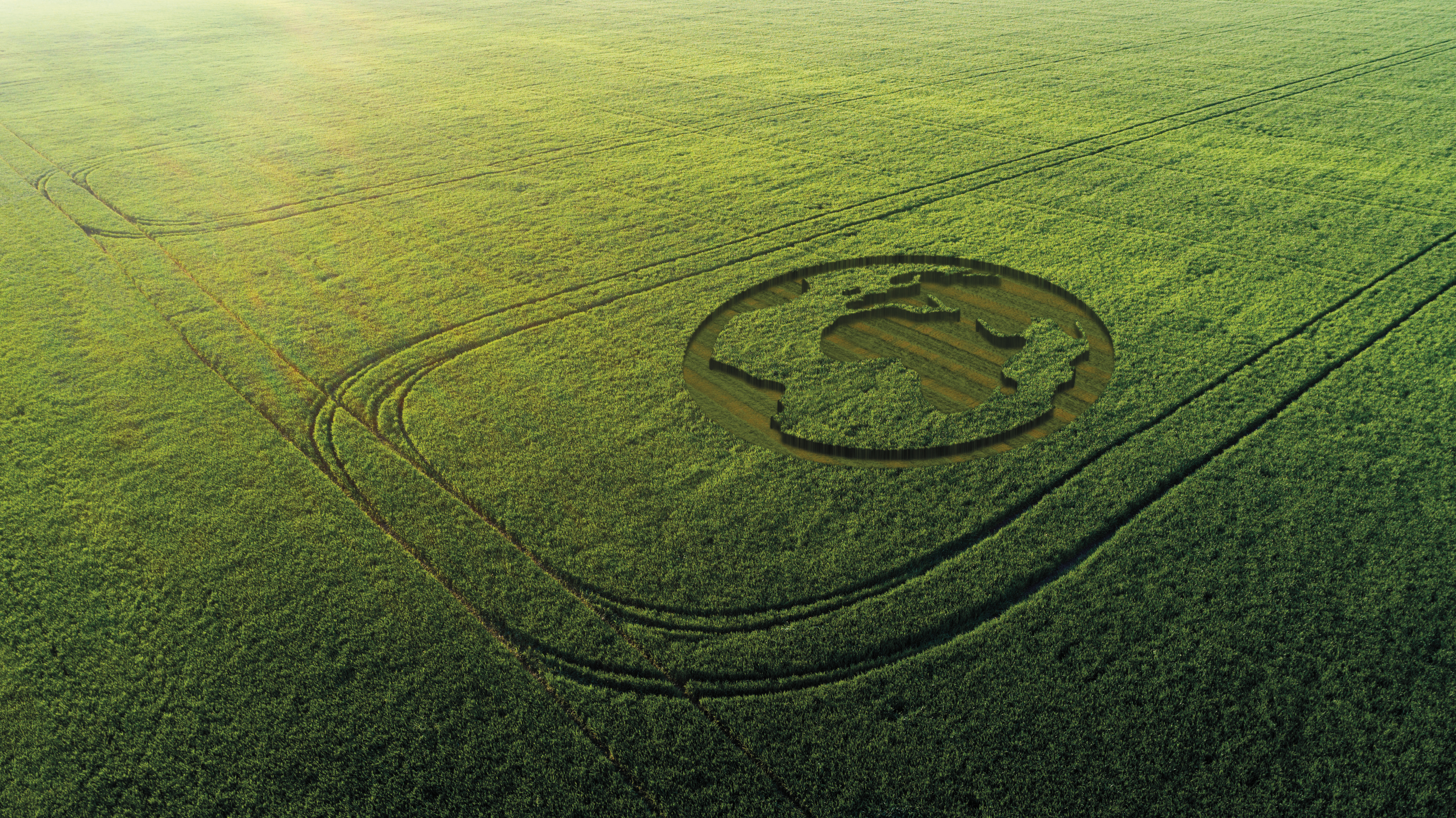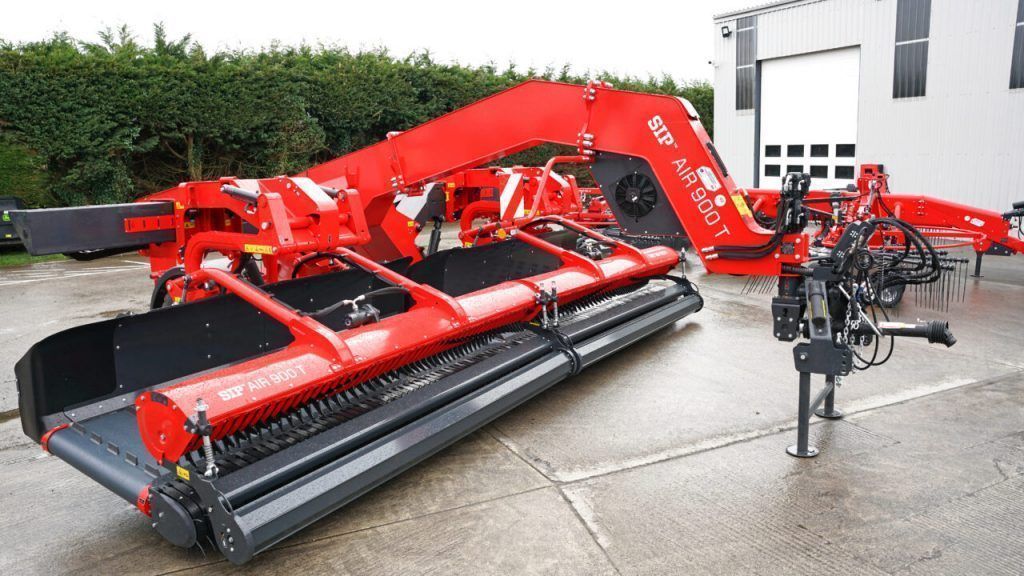Justin Roberts, 11. 4. 2023
Templetuohy Farm Machinery (TFM) is keen to maintain a reputation for supplying quality machinery so the choice of SIP as its preferred supplier of grassland machinery suggests that the Slovenian company is doing something right.
Vistors to TFM’s recent open day were met with the impressive sight of the company’s latest contribution to the emerging pick-up rake or belt-merger sector of grassland machinery.
Solid build
The first impression is of size and solidity; these machines are built to cope with hard work and high speeds, and are significantly more substantial than grouper belts on a mower.
SIP list two models, the Air 500t and the Air 900t, the latter having a maximum working width of 9m when set to deliver to the centre, and 7m when set to deliver to either side. It was this larger model that was on display at Templetuohy.
The natural comparison is with a four-rotor rake which, on the face of it, may well have a wider working width with SIP’s own Star 1250 having a 12.5m reach.
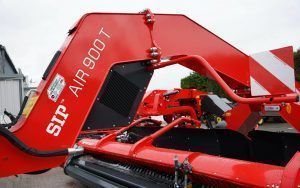
Fabricated box steel drawbar attached to the rear of the machine pushes the pick-up reels into the crop rather than dragging them through.
Work rate over working width
Yet that is not the sole factor to be taken into account when considering the two methods of collection. There are three further aspects which should influence the decision.
The first is work rate, and working width is not the sole determinant of this. Forward speed is just as critical and experience has shown that up to a 50% increase is possible, which more than makes up for the lack of width.
The downside is that the tractor has to travel further, adding fuel use and increasing the area affected by soil compaction. They also require a bigger tractor with approximately twice the horsepower/m being recommended.
However, they are more gentle on the crop by picking it up and transporting it rather than dragging it across the ground, twice, if using a four-rotor rake.
The third factor to take into account is the choice of delivery point. In lighter crops, 14m of grass can be delivered into a single swath, reducing the number of passes made by the heavier forage harvester.
The SIP machines use a camless and flexible pick-up reel with reverse hooked tines to take the crop to the top of the reel where plastic fingers flick it back to the 1m-wide belt positioned immediately behind them.
Belt delivery to centre or side
Once in the field, the SIP merger presents various delivery options, being able to deliver to either side or to the centre, whereas four-rotor rakes tend to be centre-delivery only, although a 10-15% price premium is the cost of this flexibility.
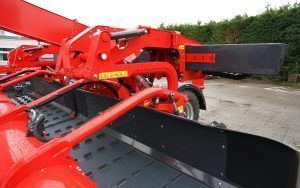
The belts are a metre wide, 3.5m long and may turn in either direction
Presently, the jury is still out on whether they have a role in Irish agriculture. It is a new method that requires increased investment, so there will naturally be doubts.
Yet progress is not made without trial or experimentation. The merger will be available for demonstration this season and it is only through being used in the field that its effectiveness and suitability for Irish conditions can be evaluated.
Original article is here.
